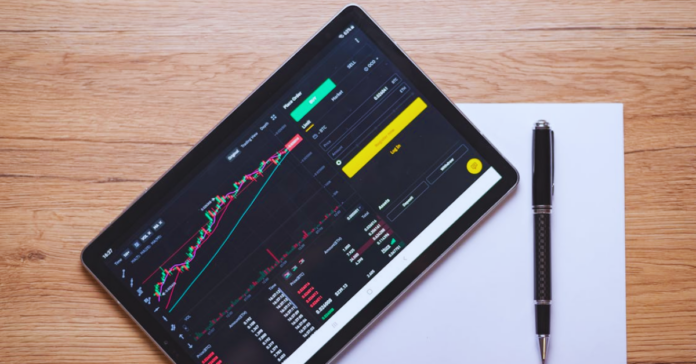What’s the relationship of rtm and shot data Understanding the Relationship Between RTM and Shot Data
The relationship of RTM (Real-Time Monitoring) shows how live data is tracked and used. RTM analyzes ongoing processes to ensure accuracy. It helps in making decisions based on current information.
Are you curious about how RTM connects with shot data? This link improves precision in production. Understanding it can boost efficiency in many fields.
RTM and shot data work together to enhance performance. Shot data provides specific details for analysis. RTM ensures the data is timely and actionable.
Understanding RTM
RTM (Reverse Time Migration) a sismic imaging approach helps to create vivid subsurface images with high level of detail. The process maps out the seismic response of the earth when exposed to a time reversed sequence of events. The controlled sources (shots) could either be on the surface or with high power explosions or vibrations.
eM_DEEPLY_BIIRONMENT works in the principal fashion of sending waves down into the earth and monitoring how those waves come back and are reflected from the earth. Those waves that come back to the surface are further processed and which very advanced technology enables to create exemplary pictures of the structures found below the surface. eM_DEEPLY_BIIRONMENT is very useful when such technologies are necessary for the very dense presence of geological structures and their imaging is required in layers of different geological properties.

Shot Data
The Input for RTM Shot data is the fundamental input for RTM processing. In a seismic survey, a “shot” is made by creating a seismic wave, usually by chemical explosion, shaking ground, or with specially engineered equipment which generates seismic waves. This wave travels limitations of a borehole and its produced geophysical wave fields.
The shot log contains time-related information such as the time between the emission of the wave and its reception, as well as other information pertaining to the wave. Each such “shot” provides a single data point used by RTM in mapping the subsurface structure. Shot data contains the information because these seismic waves behave differently and are recorded differently with different materials such as stone, water, and oil, present.
Shot Data and RTM Attack
The two are connected in a way that one cannot exist without the other; shot data helps in imaging the subsurface structures back to RTM. Shot data is considered as material to be worked on by RTM processes and algorithms. RMInc takes the shot data and the determination of reflection and travel times based on shot data and provides images of subsurface layers in great detail and accuracy.

In layman’s terms, RTM will assimilate the shot data and reconstruct the image of the earth’s interior using various forms of maths. Because of this, the overall quality of results determined by RTM processing is greatly influenced by the shot data quality. Low quality, as well as incomplete shot data, tends to produce vague subsurface pictures.
The Procedure of Shot Data Collection during Seismic Survey
Shot data is obtained with the help of seismic surveys which may be employed onshore or offshore. The first stage includes generating seismic waves for instance using either demolition explosives, air guns or motor vibrators. P-waves produced by the source propagate in the ground and reflect after hitting distinct layers of the earth. The returning waves are captured by sensors situated on the ground or inside the boreholes.
There are a variety of shot data categories
- Data of Reflection: This is rather the most typical and when the seismic waves reflect and come back to the surface layers of the ground.
- Refraction Data: On some occasions, seismic waves also refract across the boundary of layers of materials of different densities and these boundaries have subsurface information.
- Full-Waveform Data: This is a superior class of shot data that records the entire seismic wave including the direct waves and the wave reflected back providing a rich and detailed picture of the underground.
How RTM Uses Shot Data
Shot data is analyzed using the so-called time-reversal approach. In this regard, after generating and recording certain seismic waves, the next step is to carry out RTM by restoring the inverted sequences of recorded waves. This essentially means Retrospective Time Migration is done by creating a backwards picture of the wave’s propagation through various layers of the earth where the wave had been traversing in the forward direction. The mechanism enables the software to construct the areas and structures which are present below the ground surface, in relation to its beneathe surface geography.

The data is handled such that canine reflections (reflected actions occurred return of direct waves from projecting interfaces) are distinguished from disoriented complex – multiples. oooo Image quality suffers greatly because of this separation, imaging such layers without a loss of detail is impossible because as lost imaging or retaining oriented structure bears little correction to reality.
The Significance of Quality Shot Data
The success of RTM lies on how accurate shot data is provided. There are RTM geological models that include more accurate data. High quality shot data allows resolving appropriate details and reproducing images of geologic elements really sharply.
In oil and gas exploration, for instance, improved and more realistic shot data translates into better and more effective drilling strategies which enable oil and gas companies to target only drilling sites that yield satisfying results and restrain wasting money on drilling sites that lie within the brackets but without exploitable resources.
Integration of RTM and Shot Data Applications
RTM and shot data are advantageous and applicable in many fields, the most prominent being in oil and gas exploration, environmental studies, and in the field of seismology.
Oil and Gas Exploration: RTM assisted by shot data is another useful application in the search for oil or gas reserves. The subsurface maps produced are clear and of high resolution which allows the companies to get the exact areas with the potential resources. This minimizes the drilling risks and costs in addition to improving the exploration effort efficacy.
Environmental Studies
In environmental science, RTM is used in imaging the geographical features like aquifer systems or in examining the consequences of anthropogenic activities on the surface of the earth. In particular, shot data is obtained from seismic surveys to assess the extent of contamination of the subsurface or for active monitoring of earth processes like earthquakes.

Seismology
Similarly, in seismology shot data and RTM become relevant to the incidents related to the occurrence of geological hazards such as earthquakes. These include the way in which seismic waves are generated, how they propagate and diffract, and hence the ability to study the imageries of the earth’s interior and even enhance models on the prediction of earthquake occurrences.
Advantages of RTM and Shot Data Integrated
The integration of RTM and the use of shot data has a number of benefits if explained in isolation: Incorporating high quality shot data helps to provide the following gains:
- Enhanced Imaging: RTM allows more precise and clearer images of the sub-surface than available through the conventional seismic migration techniques. It is especially beneficial in regions characterized by complicated geological structures, like those with salt layers or deep waters.
- Increased Resolution: RTM resolves primary and multiple reflections which improves the image quality and interpretation of the results.
- Value for Money: With the help of RTM, there is less requirement for several surveys which in turn brings about savings in both time and costs. The high accuracy and effectiveness of RTM makes it possible for organizations and researchers to forestall tension buildup above the threshold of what be considered as acceptable in those primed vertical faults.
RTM and Shot Data Issues
There is no doubt about the power of RTM, but there are also issues especially with the quality of shot data. If the shot data is incomplete or contains noise, this will affect the RTM imaging and make it difficult to visualize the subsurface structures.
To add on, RTM is computationally expensive. The time-reversing technique involves intricate computations, hence it is time intensive and fitted with high-performance computers.
Conclusion
Advancements in computing power, data acquisition technologies, and machine-based learning factor predict the future of RTM and shot data in the offing. The future integration of RTM and shot data will incorporate very high resolution within short periods and at very minimal costs owing to better sensors and superior algorithms.
As the oil and gas, environmental science, and seismology industries become more modernized, there will be an insatiable need for clearer and more detailed images of the underground in order to enhance the RTM methods of programming and processing shot data.
Frequiently Asked Questions
What is RTM Reverse Time Migration?
RTM is a technique employed in geophysics for seismic tomography that builds up accurate images of various underground geologic forms through the use of sound waves.
What is shot data?
Shot data are those seismic data acquired while generating waves, having them pass the earth, then reflecting back through the surface.
Why is shot data important for RTM?
Shot data provides the input for RTM, which involves studying the interaction of seismic waves with the subsurface to produce images of high fidelity.
How does RTM improve seismic imaging?
RTM further improves imaging by eliminating primary from secondary reflections thus produce high resolution clearer subsurface images.
What industries use RTM and shot data?
RTM and shot data are primarily used in oil and gas exploration, environmental studies, and seismology to map subsurface structures and monitor geological activity.


